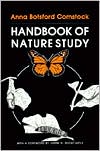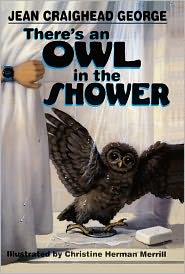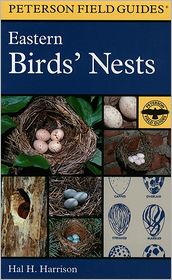I am so excited! I just emptied my first batch of pre-compost from the
All Season Indoor Composter, by
UncommonGoods...
I first learned about
UncommonGoods during a Mother's Day Pinterest board competition last spring. Because some of the pins were to come from their products, I had the chance to browse their online catalog. They were certainly uncommon, and right up my alley!
So when I was offered the opportunity to try out a product in return for writing an honest review of it, I had already started a
wishlist. I found so many interesting,
fantastic gift ideas here!
I was fascinated with the
composter, for several reasons:
- I've been a "composter" for decades -- just feel good returning things to the earth...
- I currently use a small roaster with a lid to store compost prior to heading to the compost pile, and tend to pile it then set the lid on top of the pile, instead of emptying it promptly. Yuck.
- I need something that will fit under the sink, since my counter is too crowded for a countertop storage container.
- I was in the middle of a homeschool unit on mushrooms, fungi and other "composters" and the kitchen composter fit right into our studies.
A wonderful man named Rocky sent the
composter to me, with a refill of the
bokashi that fuels it. And the rest was history!
Here's our composting story...
The Composter
The composter isn't really a "composter."
Composting is an
aerobic process: bacteria, fungi and actinomycetes that love air break down the vegetable products into an organic material that you can use to amend your garden. In the
All Season Indoor Composter, the process actually is
fermentation, not composting, and is
anaerobic: it depends on you depriving the microbes of oxygen. (See this
YouTube video for the difference -- not sure about his claims that compost piles create environmental toxins, but he explains the difference between the two process well. The
Compost Guy provides a little more balanced presentation of traditional composting vs. bokashi composting).
So why is this important?
How you use the composter, and how it's constructed, actually keep air out. (Those of you who compost, and are used to turning the pile to aerate it, will understand the difference).
The
composter, itself, is a neat bin (about 5 gallons in size), with a tight-fitting lid, a handle and a grate that keeps the composting products from the liquid which collects with the fermentation process. The
composter comes with a bag of
bokashi, a mixture of wheat bran and molasses which is "inoculated" with fermentation bacteria, which break down your compost in the bucket. Rocky sent along a second bag of
bokashi, but I didn't need it. The
composter fit perfectly under my kitchen sink.
Bokashi - the Fuel for the Composter
A little about
bokashi (from my research)...
Bokashi is a mixture of wheat bran, molasses and a special blend of microbes called "effective microorganisms," or EM, for short. If you read reviews of composters such as this one, some folks talk about the odor of the
bokashi. Do you want to know what it smells like?
Cattle feed.
If you're not a farm girl or guy, it's hard to explain. It's sweet smelling, a little like taking a big sniff in a box of guinea pig pellets, but stronger. That's all. Not nasty. Very alfalfa-y.
In fact, I'm thinking that, with the exception of the microbes, the mix is probably a lot like most animal feeds. My dog was very intrigued with the smell of the
bokashi blend as I prepared the bucket.
You can make the mix yourself, or (conveniently) purchase
bokashi refills from UncommonGoods, for $12.00.
Filling the Composter
It is extremely easy to use the composter:
 |
| Put a layer of bokashi on the bottom of the composter. |
- Remove all packaging from the composter.
- Add a generous handful of bokashi to the bottom of the composter, taking care not to block all the holes in the bottom grate.
The grate at the bottom of the composter lets the liquid that accumulates during the fermentation process drain out of the compost, and into a separate part of the composter. From what I'm able to read, this was an improvement based on consumer suggestions.
 |
| Any kind of vegetable and meat waste can be added. |
- Add your organic waste to the composter.
The directions say that you can add the following items: any vegetable scraps, and small amounts of meat scraps. You are not supposed to add materials that have already begun to spoil.
What I added: stale cereal, vegetable scraps, used napkins and paper towels, coffee grounds and filters, small amounts of paper, egg shells.
 |
| Stir the mixture after each addition of waste. |
- Dust surface of waste with more bokashi, then stir with a spoon to coat all.
The directions say to cut everything into small pieces. I didn't -- I wanted to compare what it did with materials that I would put into my compost pile as is. I know if I have to chop my garbage, I won't use the composter.
I was not brave enough to add meat scraps to the composter this time.
 |
| Add an additional layer of bokashi before sealing the bin. |
- Each time you add waste, coat the layer with a generous amount of bokashi.
- Stir after each waste addition.
- Push down the compost to push out extra air.
- Add another dusting of bokashi before sealing.
Don't be skimpy with the
bokashi -- it contains the microbes that keep this process going without rot organisms, that cause bad smells.
 |
| Seal the mixture with a plastic bag or a plastic plate. |
|
|
|
- For added air-tightness, cover the compost with a plastic bag or plate, to keep air out.
I tried a nicer looking styrofoam plate, but didn't find that 1) it covered the whole surface of the compost or 2) sealed the mixture as well.
Oh, well...
- Put the composter under the sink.
I have to say that I never noticed
ANY smell from the composter. It seals extremely well. And I didn't use it exactly as the directions said (but DID use it the way I know I would use it):
- I tossed the materials into the bin, then added bokashi and stirred it at the end of the day, but not with each addition.
- I probably didn't always get the lid on tightly.
The Finished Product
After about 10 days, the composter was full (that seems typical for a family of three). The directions said to let the material process an additional 5 days before removing from the bin, so I did. Here is what we had after that:
 |
| The "tea" -- liquid that accumulates with fermentation. |
The directions say that you can drain off the liquid periodically using the handy spigot at the bottom of the composter. I suppose this is more of an issue if you use a lot of juicy products (but they say to not add too much liquid to the composter, so...).
Anyway, this is all that accumulated in our bin (about 1/2 cup). I filled the rest of the little container with water, and used the mixture to water my rosemary plant.
 |
| The compost, after 15 days of processing. |
After the 15 days, the mixture is not yet done. The directions tell you that you have to now bury the mixture in the ground to finish the process. I haven't done this yet (we just emptied it this evening), and wonder what I will do in the winter (you don't dig anything in the ground here in New England, in the winter).
I was impressed with the amount that the melon rinds, eggs shells and cucumber peels broke down. Good stuff.
 |
| Another view of the finished product. Nice, huh? |
What I'd do next time:
- Dig the hole for the finishing of the compost ahead of time, so I could just dump it in the hole when I'm finished.
- Try to compost everything organic: paper from the office shredder, paper towels and facial tissues, shredded newspaper (why? because I normally compost all these things -- if I can't compost all the things I normally compost, I'll be disappointed).
- Try adding meat scraps to the compost.
 |
| The empty bin. |
The directions tell you not to add anything that already has begun to spoil. That was a little disappointing. There's something a little ironic about throwing the rotten cucumber that hid in the back of the crisper, in the garbage, instead of in the composter. I think I might try it in the composter next time. I'll let you know what happens.
The smell at the bottom of the bin wasn't as pleasant as the top. But it wasn't as bad with the
bokashi as most rotten stuff smells.
My Recommendations
The
All-Season Indoor Composter provides a spacious, odor-free way to store your compost inside until you can get it into the compost pile or pit. The
bokashi makes the food waste break down much more quickly than it would in an empty container on your counter, and the pre-compost product breaks down to about 1/2 its starting volume during the finishing process in the bin. Although you have to then bury the product outside before using it as compost (it's not finished yet), the bin at least provides a convenient way to collect these scraps without mess, smell or pest problems in the house.
If you like feeling good about returning organic materials to the environment, then the
All-Season Indoor Composter, from
UncommonGoods, is a perfect addition to your "green" living routines.
Mine is being refilled for another "go-around," even as we "speak."
Other Things on My Wishlist at UncommonGoods
There are so many great unique finds for girls at Uncommongoods -- I am particularly fond of the
Periodic Table Building Blocks
, being a science girl and somewhat of a geek.
But,
their picks for guys are just as intriguing: a President Block Set (my history-loving youngest son would go bonkers over that), and the older two (who are former Rubix cubers and chess masters) would appreciate the Lab Test Games
(my history-loving youngest son would go bonkers over that), and the older two (who are former Rubix cubers and chess masters) would appreciate the Lab Test Games .
.
For myself, I love the one-of-a-kind garden accessories, in particular the
Apple Anchor Hummingbird Feeder
and the
Butterfly Puddler
. I know these would be perfect in my garden -- we get a zillion hummingbirds (they come to anything red or shiny), and the orioles and bluebirds eat fruit left out for them in the yard. I also have noticed many butterflies drinking out of the "puddles" in plant saucers, so the puddler would be a pretty addition -- like a stepping stone with a dual purpose.
I'll have to wait until spring for those things... sigh. I so miss summer already.
Will you help me out?
Please click on the link below to answer a short, 8-question survey about your experience on my blog. No ads! Just information for me. Thanks so much!
Take the
October 2012 Reader Survey now.


by Beatrix Potter (my youngest brother was a big Beatrix Potter fan)
, by Brian Jacques (a favorite of my eldest son)
, by Lois Ehlert (all my kids loved Lois Ehlert's collage illustrations - a great thing to try for your creative arts connections, if you use the "Five in a Row" approach to homeschooling)











































